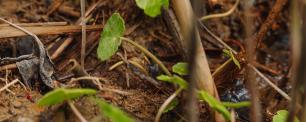ENVIRON_CHANGE
Long-term consequences of environmental changes on biodiversity: incorporating life history traits and time dimension when assessing and predicting the loss of functional and phylogenetic complexity
Species diversity loss driven by habitat modification alter ecosystem functioning, reduce stability, and thus impact long-term sustainability of ecosystem services. By using a multidisciplinary approach, here I ask why certain species are better prepared to respond to environmental changes than others, and how the spatiotemporal variation in responses to habitat change alters the structure of bird communities in terms of functional and phylogenetic diversity. The outcomes will provide a general picture of the impact of land use on biodiversity, allowing to better guide management decisions, and to assess the extent to which functional diversity is more protected in species rich assemblages.
Not all species equally respond to environmental changes, and some are better adapted than others to cope with the new challenges. The loss of functional and phylogenetic diversity driven by habitat loss has a great potential to alter ecosystem functioning and reduce stability, and thus impact the long-term sustainability of ecosystem services. Previous assessments on the causes and consequences of biodiversity loss due to human activities commonly adopted a space-for-time substitution approach to quantify the impacts of habitat alteration, but the impacts on ecosystem functions and evolutionary history over time still remains to be uncovered. I propose to advance the knowledge by using a multidisciplinary approach that combines long-term monitoring and survey, niche analysis, GIS tools, phylogenetic comparative analyses and ecological modelling to understand why certain species are better prepared to respond to environmental changes than others, and how the spatiotemporal variation in responses to habitat changes alters the structure of communities in terms of functional and phylogenetic diversity. Building on classic life history theory and modern theoretical and empirical work, I intend to integrate autoecology and community ecology to investigate the causes and long-term consequences of urbanisation and agriculture to the biodiversity of avian communities. The outcomes will provide us a general picture of the impact of land use change on biodiversity, allowing to better guide management decisions, and may also allow us to assess the extent to which functional diversity is more protected in species rich assemblages.






